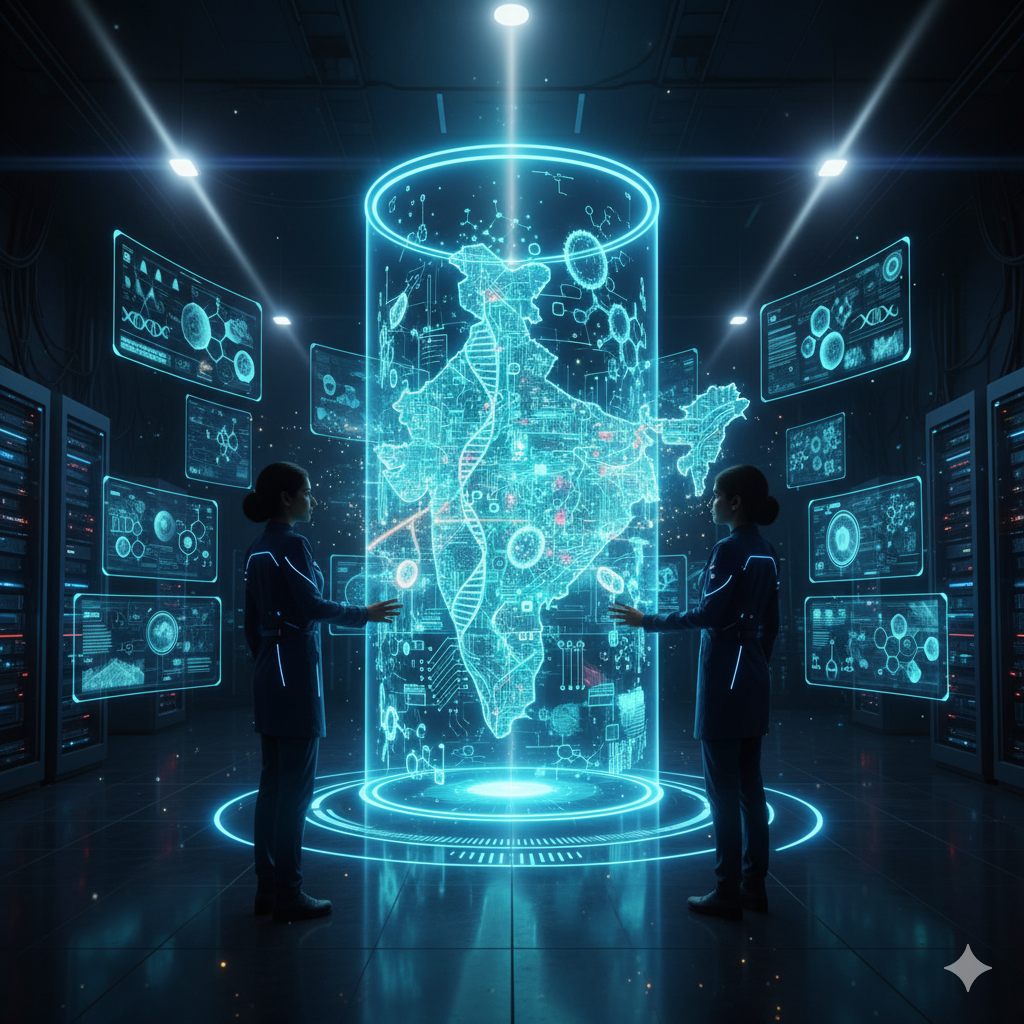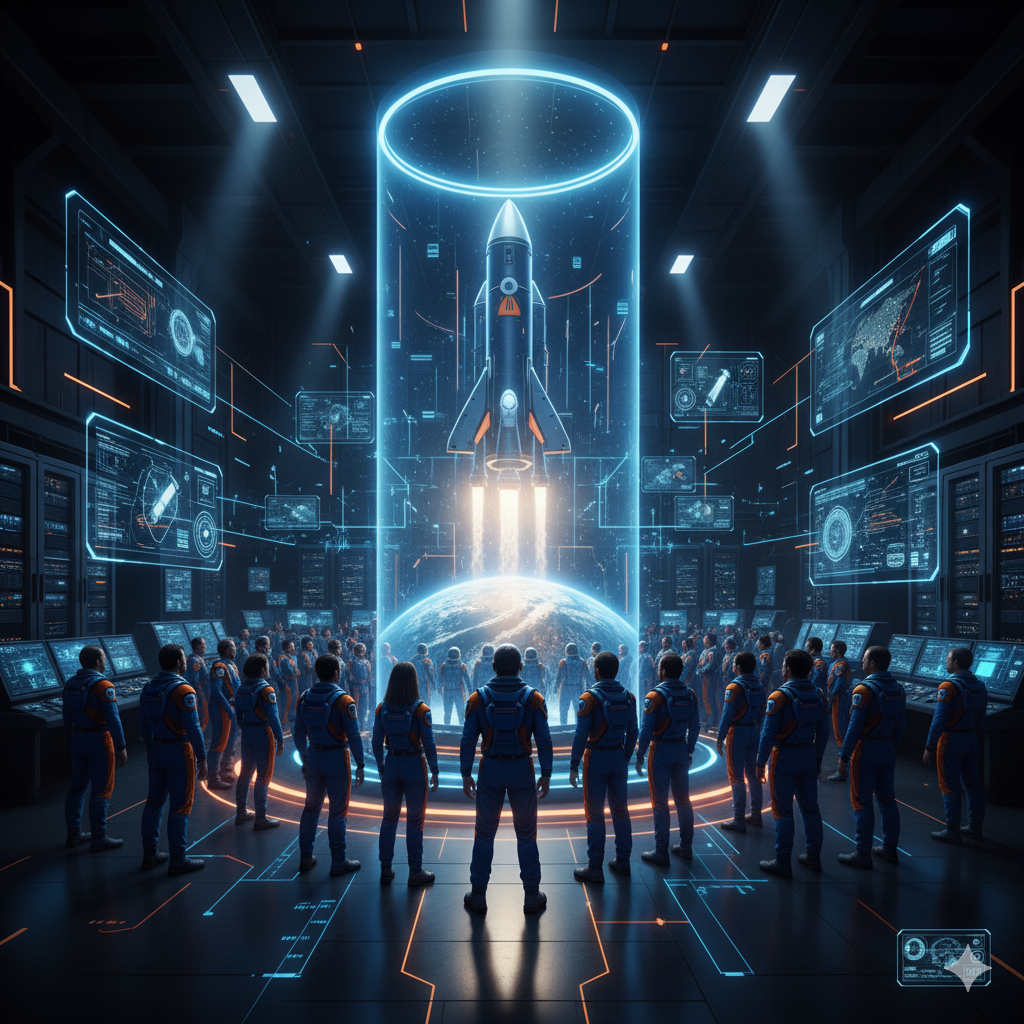India’s space exploration journey has emerged as one of the most inspiring scientific endeavors in the modern world. From humble beginnings in the 1960s to launching interplanetary missions, the Indian Space Research Organisation (ISRO) has demonstrated that ambition, innovation, and cost-effectiveness can redefine the space race. Among ISRO’s most lauded milestones is its Mars Orbiter Mission (MOM), popularly known as Mangalyaan, which made India the first Asian nation to reach Mars orbit and the first in the world to do so on its maiden attempt.
This article explores India’s path to Mars and the broader ambitions of ISRO to go beyond — including solar, lunar, and future planetary missions — making space not just a frontier of science but also of national pride, technological advancement, and global leadership.
I. The Foundations of India’s Space Ambition
1. The Early Years
India’s space program was launched under the visionary leadership of Dr. Vikram Sarabhai in 1969. He believed that space science could be used for social and economic development, rather than military supremacy. In its early stages, ISRO focused on Earth observation, telecommunication, and meteorology.
The space journey was driven by necessity: India needed better weather forecasting, crop monitoring, and rural communication. ISRO’s small launches and remote sensing satellites in the 1980s and 1990s laid the foundation for future interplanetary exploration.
2. Building Technological Infrastructure
Before heading to other planets, ISRO developed key technologies:
- Indigenous launch vehicles like PSLV and GSLV
- Precise navigation and tracking systems
- Autonomous mission control and deep space communication
- Orbital mechanics expertise through Chandrayaan-1 (India’s first lunar mission in 2008)
These advancements provided a technological springboard for Mars exploration.
II. India’s Historic Mission to Mars: Mangalyaan (MOM)
1. Overview of the Mission
Launched on November 5, 2013, and inserted into Mars orbit on September 24, 2014, the Mars Orbiter Mission (MOM) was a monumental achievement:
- First Asian country to reach Mars
- First country in the world to succeed in its maiden Mars mission
- Cost only ₹450 crore (approx. $74 million), making it the most economical Mars mission ever
2. Scientific Objectives
The primary scientific goals of MOM were:
- Study the Martian surface and morphology
- Examine Martian atmosphere and mineralogy
- Detect methane, a possible indicator of life
- Conduct orbit and navigation experiments around Mars
MOM carried five scientific instruments, including:
- Methane Sensor for Mars (MSM)
- Mars Color Camera (MCC)
- Thermal Infrared Imaging Spectrometer (TIS)
3. Technological Innovations
To make the mission successful with limited resources, ISRO engineers employed:
- Autonomous spacecraft navigation (since real-time control was impossible)
- High-gain antenna design for deep-space communication
- Precise trajectory corrections using gravitational assist from Earth orbit
- A lightweight and compact liquid-propellant engine
4. Global Recognition
MOM’s success received accolades worldwide, not only for its scientific achievement but also for demonstrating India’s capability in low-cost space engineering. It positioned ISRO as a competitive player in the global space community and set an example for emerging nations.
III. Mars Orbiter Mission 2 (MOM-2): The Next Step
Building on the success of MOM, ISRO has proposed Mars Orbiter Mission 2, also known as Mangalyaan-2:
- Planned for the late 2020s
- Will likely include an orbiter and possibly a lander
- Aims to carry more sophisticated instruments for deeper atmospheric and geological studies
MOM-2 will be crucial for establishing a long-term Indian presence in Martian exploration and for preparing for sample return or crewed missions in the future.
IV. Beyond Mars: Expanding the Horizons
1. Chandrayaan Missions to the Moon
Before MOM, India achieved lunar success with:
- Chandrayaan-1 (2008): Discovered water molecules on the Moon
- Chandrayaan-2 (2019): Orbiter successful, though the lander crashed
- Chandrayaan-3 (2023): Achieved soft landing on Moon’s south pole — first by any nation
These missions provide a template for future sample return missions and possible lunar habitation modules.
2. Aditya-L1: Exploring the Sun
Launched in September 2023, Aditya-L1 is India’s first solar mission, placed at Lagrange Point 1 to:
- Study the Sun’s corona, solar wind, and magnetosphere
- Help predict solar storms that affect Earth’s communication and power systems
This mission broadens India’s scientific footprint beyond planetary exploration into heliophysics.
3. Proposed Venus Mission – Shukrayaan-1
India is also planning an ambitious mission to Venus, named Shukrayaan-1:
- Expected launch: around 2026–2028
- Objective: Study Venus’ dense atmosphere, greenhouse effect, and surface geology
- Will help understand Earth-like planets and climate systems
V. Human Spaceflight: Gaganyaan Mission
India’s journey beyond robotic missions includes human spaceflight. Under Gaganyaan, ISRO aims to:
- Launch three Indian astronauts (Gagannauts) into low Earth orbit (~400 km)
- Duration: ~7 days
- Launch vehicle: GSLV Mk III (LVM3)
- Includes crew module, escape system, and life-support systems
The mission, expected by 2025, will make India the fourth nation to independently send humans to space.
Technological Innovations:
- Human-rated launch vehicle
- Astronaut training (in partnership with Russia)
- Robotics and AI for safety systems
- Vyommitra: a female humanoid robot to precede human flights
VI. India’s Strategy for Long-Term Interplanetary Exploration
ISRO’s approach to interplanetary exploration is marked by:
1. Cost-Effective Engineering
India achieves high performance at low cost due to:
- Smaller teams with shared responsibilities
- Maximum use of indigenous components
- Short development cycles
- Modular and scalable satellite systems
2. Autonomous Navigation and AI Integration
Future missions will incorporate:
- AI-based fault detection and recovery
- Real-time path correction in deep space
- Image recognition for planetary mapping
3. Space Collaboration
India collaborates with multiple space agencies:
- NASA (USA): For lunar science and deep space radar data
- JAXA (Japan): For lunar rover missions
- CNES (France): For atmospheric data and training
- Roscosmos (Russia): For astronaut training and crew systems
This growing international cooperation strengthens India’s position in global space diplomacy.
VII. Space Science and Public Engagement
India’s interplanetary missions have spurred interest in STEM education:
- ISRO organizes Young Scientist Programmes (YUVIKA)
- Educational apps and online tools simulate missions like Mangalyaan
- Public exhibitions of launch vehicles and lunar landers
- Media coverage and documentaries increase science literacy
The cultural impact of space exploration has helped inspire a generation of scientists and engineers.
VIII. Future Interplanetary Possibilities
1. Missions to Asteroids
ISRO is considering missions to asteroid belts for:
- Understanding solar system formation
- Mining potential (e.g., rare metals)
- Planetary defense strategies
2. Sample Return Missions
Future goals include returning samples from:
- The Moon (via Chandrayaan series)
- Mars (in collaboration with international agencies)
- Asteroids or comets
3. Outer Planetary Missions
Though still in conceptual stages, India has long-term ambitions for:
- Missions to Jupiter’s moons (e.g., Europa, Ganymede)
- Flybys of Saturn or Uranus
- Deep-space telescopes for astrophysics research
IX. Challenges and the Road Ahead
Despite significant progress, India faces key challenges:
1. Budget Constraints
Although ISRO is efficient, limited budgets may slow down larger missions, especially those involving humans or sample returns.
2. Space Debris and Regulation
As India launches more satellites, space debris management and regulatory frameworks need to evolve rapidly.
3. Technological Dependence
Although much has been indigenized, India still imports some critical components like deep-space communication hardware and high-end semiconductors.
4. Private Sector Integration
India is transitioning to a public-private model, but private companies need long-term policy clarity, funding, and technological access to scale their capabilities.
Conclusion
India’s journey to Mars and beyond is a remarkable story of innovation, resilience, and strategic vision. From the groundbreaking Mangalyaan to upcoming missions to Venus and the Sun, ISRO continues to prove that developing nations can lead in high-stakes, high-tech arenas.
More than just exploring the cosmos, India’s space missions are shaping the future of science education, climate research, defense, and global cooperation. With careful planning, continued public support, and growing international partnerships, India is poised to be a major player in the next era of space exploration — one that reaches far beyond Mars.
Quick Summary of Major Missions
| Mission | Objective | Year | Outcome |
|---|---|---|---|
| Chandrayaan-1 | Lunar Orbiter | 2008 | Discovered water on Moon |
| Mangalyaan (MOM) | Mars Orbiter | 2013 | Successful; Mars entry in 2014 |
| Chandrayaan-2 | Lunar Orbiter & Lander | 2019 | Orbiter successful |
| Chandrayaan-3 | Soft Landing on Moon | 2023 | Successful near lunar south pole |
| Aditya-L1 | Solar Observatory | 2023 | Ongoing at Lagrange Point 1 |
| Gaganyaan | Human Spaceflight | Expected 2025 | In development |
| Shukrayaan-1 | Venus Exploration | 2026–28 (Planned) | Proposed mission |




